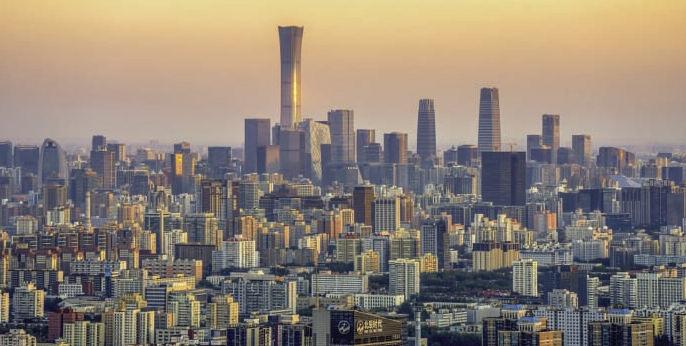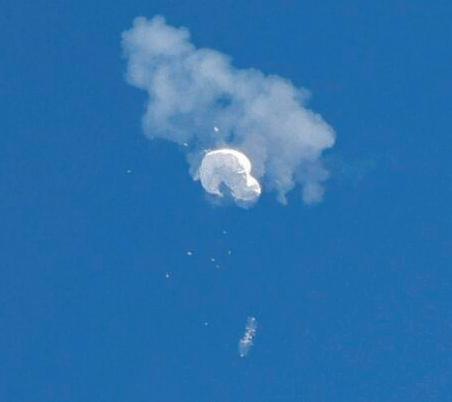
3 minute read
Surveys show China’s economic recovery expected to lead globally in 2023
from Epaper_23-02-9 KHI
BEIJING Agencies
China’s economic recovery is expected to take the lead globally in 2023, recent surveys by CGTN showed. One poll indicates that 78.34 percent of the global respondents believe that China has become an important engine for the global economy, and 76.23 percent believe that the Chinese economy will inject confidence and strength into the sluggish recovery of the global economy.
Advertisement
For the entirety of 2023, economists, international organizations and investment institutions generally predict that the global economy will continue to recover in a weak manner. However, the strong rebound of the Chinese economy in the early spring has brought a glimmer of hope.
With the Chinese government adjusting its COVID-19 policy in late 2022, the International Monetary Fund raised the estimate for China’s 2023 growth from 4.4 to 5.2 percent in its latest World economic Outlook report. Morgan Stanley raised its China GDP growth outlook to 5.7 percent in a research note released in January, 0.3 percentage point higher than its previous estimate. China’s GDP growth has been relatively high when compared to that of other major economies over the past three years, as the average growth rate between 2020 and 2022 was 4.5 percent.
According to a CGTN poll, 71.6 percent of global respondents believe the country’s scientific and dynamic adjustment of epidemic prevention policies has effectively balanced the relationship between COVID-19 prevention and control and economic and social development. The achievements of the country’s efforts in balancing this relationship were highly recognized by 86.8 percent of the respondents.
One figure to note is that 84.7 percent of the respondents believe
China refused call with pentagon after downing of balloon, says us
WASHINGTON
Afp that China’s development path is in line with its national conditions, which is a key factor for the longterm stability of China’s economy.
Beijing rejected a request for a secure call between Pentagon chief Lloyd Austin and his counterpart on the day an American warplane shot down a suspected Chinese surveillance balloon, a US Department of Defense spokesman said Tuesday.
“On Saturday, 4 February, immediately after taking action to down the PRC balloon, the DOD submitted a request for a secure call between Secretary Austin and PRC Minister of National Defense Wei Fenghe,” Brigadier General Pat Ryder said in a statement, referring to the People’s Republic of China.
“Unfortunately, the PRC has declined our request. Our commitment to open lines of communication will continue,” Ryder added. China says the balloon was an errant weather observation aircraft with no military purpose, but Washington has described it as a sophisticated high-altitude spying vehicle. After slowly traversing the middle of the United States, reportedly over several top secret military sites, the balloon headed out over the east coast, where a fighter plane shot down it down on Saturday.
Austin and Wei met in Cambodia last November as Washington and Beijing sought to lower the temperature after a visit by then-speaker of the House Nancy Pelosi that enraged China. But the balloon incident has heightened tensions, and led US Secretary of State Antony Blinken to scrap a rare trip to Beijing.
On Monday, President Joe Biden defended the decision to wait until the balloon had crossed the country to down it, saying the Defense Department concluded that it was best to do so over water.
China’s strong economic rebound started to emerge at the beginning of 2023.
The purchasing managers’ index for China’s manufacturing sector came in at 50.1 in January, up from 47 in December 2022, returning to expansion territory for the first time since September 2022, according to the National Bureau of Statistics.
Authorities in China’s exportoriented regions have also elevated support for merchants to secure orders overseas, including rolling out chartered flights and offering subsidies as the country relaxed its COVID-19 curbs last December.
National Security Council spokesman John Kirby said the same day that measures were taken to ensure the balloon’s instruments were “mitigated” in their ability to spy during the flyover, while “at the same time increasing and improving our ability to collect intelligence and information from it.”
General Glen VanHerck, head of the US Northern Command, said a naval ship would map the debris field left by the balloon, which is expected to measure about 1,500 by 1,500 meters (yards) in the Atlantic.
The balloon itself was up to 200 feet (60 meters) tall and carried a payload weighing several thousand pounds that was roughly the size of a regional jet aircraft, he said. VanHerck said the balloon debris would be carefully studied.

“I don’t know where the debris is going to go for a final analysis, but I will tell you that certainly, the intel community along with the law enforcement community that works this under counterintelligence will take a good look at it,” he said.









